
Pompeii: The Eternal City Frozen in Time
Discover Pompeii, the ancient city preserved by volcanic ash, where history and culture come alive amidst its remarkable ruins and breathtaking landscapes.
Pompeii, nestled at the foot of Mount Vesuvius in Italy, is a city like no other. It offers a rare glimpse into ancient Roman life, frozen in time by the catastrophic eruption of 79 AD. Walking through its well-preserved streets, you will encounter a myriad of historical wonders that tell stories of a civilization long gone. As you explore the ruins of Pompeii, you will be captivated by its astonishingly detailed frescoes, mosaics, and the architecture of its grand villas, such as the House of the Faun. The Forum, the heart of Pompeii's social and political life, stands as a testament to the city's former glory. The Amphitheatre and the Theatre remind visitors of the city's vibrant entertainment culture. A visit to the Villa of the Mysteries offers a deeper insight into the religious and cultural practices of ancient Pompeii. Surrounding the ruins are lush vineyards and beautiful landscapes that add to the charm of this historic city. The haunting plaster casts of Pompeii's inhabitants provide a poignant reminder of the city's tragic end and serve as a powerful connection to the past.
Local tips in Pompeii
- Wear comfortable shoes; the ancient streets are uneven and require a lot of walking.
- Visit early in the morning or late afternoon to avoid the midday heat and crowds.
- Bring water and snacks, as there are limited facilities within the archaeological site.
- Consider hiring a local guide to gain deeper insights and historical context.
- Don't miss the Villa of the Mysteries, located slightly outside the main ruins.
Neighbourhoods in Pompeii
Pompeii: The Eternal City Frozen in Time
Pompeii, nestled at the foot of Mount Vesuvius in Italy, is a city like no other. It offers a rare glimpse into ancient Roman life, frozen in time by the catastrophic eruption of 79 AD. Walking through its well-preserved streets, you will encounter a myriad of historical wonders that tell stories of a civilization long gone. As you explore the ruins of Pompeii, you will be captivated by its astonishingly detailed frescoes, mosaics, and the architecture of its grand villas, such as the House of the Faun. The Forum, the heart of Pompeii's social and political life, stands as a testament to the city's former glory. The Amphitheatre and the Theatre remind visitors of the city's vibrant entertainment culture. A visit to the Villa of the Mysteries offers a deeper insight into the religious and cultural practices of ancient Pompeii. Surrounding the ruins are lush vineyards and beautiful landscapes that add to the charm of this historic city. The haunting plaster casts of Pompeii's inhabitants provide a poignant reminder of the city's tragic end and serve as a powerful connection to the past.
When is the best time to go to Pompeii?
Iconic landmarks you can’t miss
Pompeii Archaeological Park
Explore the ancient marvels of Pompeii, a UNESCO World Heritage site, and witness the remarkable preservation of Roman life before the eruption of Mount Vesuvius.

Amphitheatre of Pompeii
Explore the Amphitheatre of Pompeii, a stunning relic of ancient Rome showcasing remarkable architecture and rich history.

Scavi di Pompei
Discover the ancient city of Pompeii, a UNESCO World Heritage Site, where history comes alive amid the ruins of a once-thriving Roman civilization.
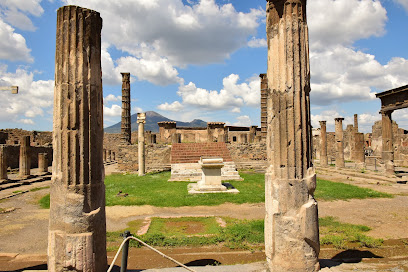
Foro di Pompei
Explore the ancient ruins of Foro di Pompei, a historical landmark offering insights into Roman civilization and timeless architectural beauty.
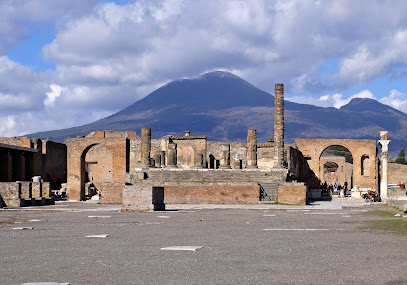
Pompeii (UNESCO)
Discover the ancient city of Pompeii, a UNESCO World Heritage Site, and witness the extraordinary ruins preserved by time and nature.

Teatro Grande
Explore the majestic Teatro Grande in Pompeii, a stunning ancient Roman theater that brings history to life amidst breathtaking ruins.

Villa dei Misteri
Explore the Villa dei Misteri in Pompeii, a remarkable archaeological site showcasing stunning frescoes and insights into ancient Roman culture.

Lupanare di Pompei
Discover the Lupanare di Pompei, an ancient brothel revealing the intriguing social life of Roman citizens through stunning frescoes and preserved architecture.

Scavi di Pompei (ingresso Piazza Immacolata)
Step back in time at Scavi di Pompei, a UNESCO World Heritage site where ancient Roman life is beautifully preserved amidst the ruins of a historic city.

House of the Faun
Discover the grandeur of the House of the Faun, an ancient Roman gem in Pompeii, showcasing stunning mosaics, frescoes, and lush gardens.

Garden of the Fugitives
Experience the poignant beauty of the Garden of the Fugitives in Pompeii, a haunting reminder of the past and a tribute to those lost in the eruption of Vesuvius.

Antiquarium di Pompei
Explore the Antiquarium di Pompei, where ancient artifacts tell the story of life before the eruption of Mount Vesuvius.

Pompeii Ruins
Discover the haunting beauty of Pompeii Ruins, an ancient city frozen in time by the eruption of Mount Vesuvius, waiting to tell its story.

House of the Vettii
Explore the House of the Vettii in Pompeii, a stunning archaeological site showcasing exquisite frescoes and insights into ancient Roman life.

Pompei Scavi Archeologici
Discover the ancient wonders of Pompei Scavi Archeologici, where history and culture intertwine in the ruins of a once-great Roman city.

Unmissable attractions to see
Amalfi Coast
Experience the stunning beauty of the Amalfi Coast, where breathtaking views, delicious cuisine, and rich history await every traveler.

Archaeological Park of Pompeii
Discover the ancient city of Pompeii, where history comes alive through the ruins of a civilization frozen in time by a volcanic eruption.

Royal Palace of Caserta
Explore the Royal Palace of Caserta: A stunning Baroque palace surrounded by exquisite gardens and rich history in the heart of Italy.

Sansevero Chapel Museum
Explore the Sansevero Chapel Museum in Naples, where art, history, and spirituality converge in breathtaking masterpieces and stunning architecture.

Ovo Castle
Discover the enchanting Ovo Castle in Naples, where history meets breathtaking views of the Bay and the vibrant culture of Italy.
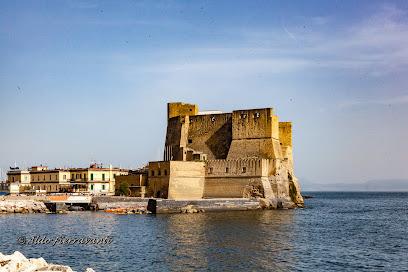
Vesuvius National Park
Discover the breathtaking landscapes and rich biodiversity of Vesuvius National Park, a must-visit destination near Naples, Italy.

Museo Archeologico Nazionale di Napoli
Explore the rich history of ancient civilizations at the Museo Archeologico Nazionale di Napoli, home to exquisite artifacts and breathtaking art.

Castel Nuovo
Explore Castel Nuovo, a historic castle in Naples that showcases the city's rich heritage and stunning architecture, a must-visit for every traveler.

Museo e Real Bosco di Capodimonte
Explore the captivating art and serene landscapes of Museo e Real Bosco di Capodimonte, a cultural treasure in the heart of Naples.
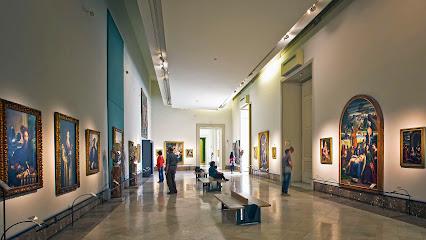
Underground Naples
Explore the enchanting depths of Underground Naples, where history, archaeology, and culture converge beneath the bustling streets of the city.

Duomo di Napoli
Discover the grandeur of Duomo di Napoli, Naples' iconic cathedral, a masterpiece of art and spirituality in the heart of the city.

Villa Rufolo
Discover the enchanting beauty and rich history of Villa Rufolo, a landmark that offers breathtaking views and lush gardens in Ravello, Italy.

Chiesa del Gesù Nuovo
Discover the architectural beauty and historical significance of Chiesa del Gesù Nuovo, a must-visit Catholic church in Naples.

Complesso Monumentale di Santa Chiara
Discover the serene beauty and rich history of the Complesso Monumentale di Santa Chiara, a must-visit monastery in Naples, Italy.

Murale Diego Armando Maradona - Quartieri Spagnoli
Discover the vibrant Murale Diego Armando Maradona in Naples, a stunning tribute to the legendary footballer that embodies the city's passion for sport and culture.

Essential places to dine
Ristorante Pizzeria IMatti
Savor authentic Italian cuisine at Ristorante Pizzeria IMatti in Pompei—where every bite tells a story of tradition and flavor.
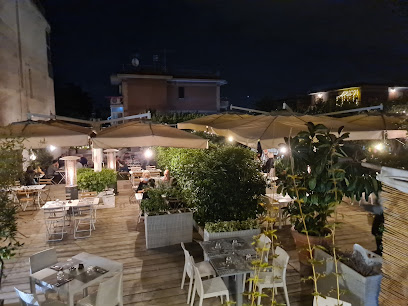
Le Delizie Pompei via Roma 83
Savor authentic Italian flavors at Le Delizie Pompei—your go-to restaurant for pizza and seafood delights in Pompeii.

Alleria Pizzeria Newpolitana
Discover authentic Neapolitan pizza at Alleria Pizzeria Newpolitana in Pompeii—where tradition meets taste in every delicious slice.

La Bettola Del Gusto
Savor exquisite seafood and steak at La Bettola Del Gusto in Pompeii – where culinary excellence meets historical charm.
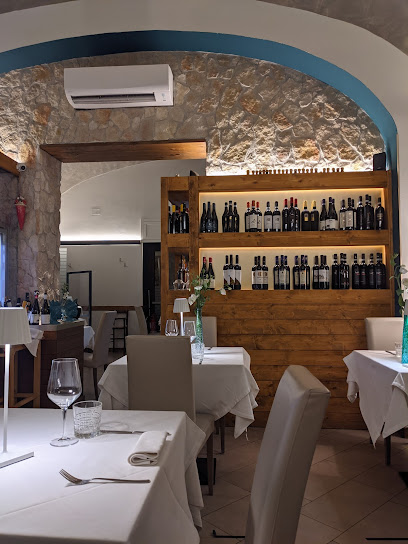
Caupona Pompeii
Discover ancient Roman flavors at Caupona Pompeii, where history meets modern dining in an unforgettable culinary experience.

Na' Pasta
Experience authentic Italian flavors at Na' Pasta in Pompei – where fresh pasta meets warm hospitality.

Trammiere
Experience authentic Italian pizza at Trammiere in Pompei - where tradition meets taste in every slice.

Varnelli Pizzeria Bistrot Ristorante
Discover the heart of Italian cuisine at Varnelli Pizzeria Bistrot Ristorante in Pompei - where tradition meets taste!

Mercato Pompeiano Restaurant
Experience authentic Italian flavors at Mercato Pompeiano Restaurant in Pompei - where tradition meets taste.

Shaval
Discover authentic Italian flavors at Shaval in Pompei—home to delicious pizzas and traditional dishes crafted with love.

Garum Pompei - Ristorante - Enoteca
Experience exquisite seafood dining at Garum Pompei - where fresh flavors meet Italian culinary tradition.

Todisco
Discover authentic Italian cuisine at Todisco in Pompei—home to delicious pizzas and welcoming atmosphere perfect for all travelers.

Stuzzico By Lucius
Experience authentic Italian flavors at Stuzzico By Lucius in Pompei – where tradition meets culinary excellence.

Zi’ Caterina
Discover authentic Italian cuisine at Zi’ Caterina in Pompeii - where delicious seafood meets traditional pizza in a warm setting.

Add'ù Mimì
Experience authentic Italian seafood at Add'ù Mimì in Pompei—where tradition meets flavor in a charming setting.

Markets, malls and hidden boutiques
Centro Commerciale La Cartiera
Discover a vibrant shopping experience at Centro Commerciale La Cartiera, where fashion, food, and fun come together in Pompei.

Pasticceria De Vivo since 1955 in Pompeii
Experience the rich flavors of Italy at Pasticceria De Vivo, Pompeii's beloved cake shop, offering delightful pastries, gelato, and coffee.

Mida Sport
Discover Mida Sport in Pompei – your ultimate destination for quality sporting goods, perfect for athletes and adventurers exploring Italy.

Vitium
Experience the perfect blend of relaxation and indulgence at Vitium, Pompei's premier bar tabac and cigar lounge with a rich selection.

Mondi Store
Explore Pompei with Mondi Store, your go-to cell phone store for mobile devices, accessories, and connectivity solutions while traveling in Italy.

Civico 36 - multistore
Explore Civico 36 in Pompei for stylish clothing and accessories for the whole family, offering a unique shopping experience in a vibrant setting.

Camomilla Italia
Explore stylish women's clothing, trendy accessories, and chic handbags at Camomilla Italia in the heart of Pompei, a fashion paradise for every shopper.
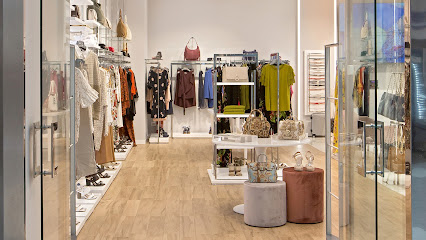
Tufano Moda - Pompei
Explore Tufano Moda in Pompei for a unique shopping experience featuring stylish clothing and accessories for both men and women.

Ludoville Pompei - Giocheria Pompei
Explore the enchanting world of toys at Ludoville Pompei, where imagination and play come to life in a vibrant shopping experience for families.

Fitness store Pompei
Discover the best sports nutrition products at Fitness Store Pompei, where health meets expertise in the heart of historic Pompei.

Angelina Cake Boutique
Discover the exquisite flavors of Angelina Cake Boutique, where artisanal cakes and delicious pastries create a sweet escape in Pompei.

Luxury Kids Pompei - Abbigliamento per Neonati e Bambini
Discover high-end children's fashion at Luxury Kids Pompei, where style meets comfort for your little ones in the heart of historic Pompei.

GIORDANO BOUTIQUE
Discover the perfect blend of Italian style and contemporary fashion at Giordano Boutique in Pompeii, where every piece tells a story.

LADY BOCCIA di Laurenzina Ferraro
Explore the essence of Italian fashion at Lady Boccia di Laurenzina Ferraro, where style meets quality in the heart of Pompei.

ROBERTA VERINO BOUTIQUE
Discover timeless Italian elegance at Roberta Verino Boutique in Pompei, where fashion meets sophistication in every piece.

Essential bars & hidden hideouts
Wolf Irish Pub
Wolf Irish Pub in Pompei: A cozy Irish haven serving up local brews and hearty comfort food, perfect for unwinding after exploring ancient ruins.

Open Bar Pompei
Discover Open Bar Pompei, a lively bar and cafeteria offering delicious snacks and refreshing drinks in the heart of historic Pompeii.

'Mericano (Pub - Steak House - Birreria) Pompei
Experience the vibrant culinary scene of Pompei at Mericano, where delicious steaks and craft beers meet a lively atmosphere.

Pub27
Discover the vibrant nightlife of Pompei at Pub27, a cozy pub offering an array of local drinks and a lively atmosphere ideal for travelers.

Mamba Pompei
Discover a culinary oasis at Mamba Pompei, where delicious meals and vibrant atmosphere await you in the heart of Pompeii.

So Zen Mediterranean Restaurant & Arabian Lounge Bar
Discover the flavors of the Mediterranean and Arabian cuisine at So Zen Restaurant & Lounge Bar in Pompei, where every dish tells a story.
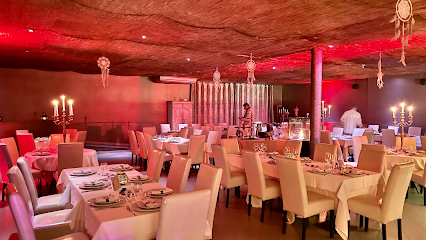
THE ROOF
Discover The Roof in Pompei, a stylish cocktail bar and lounge offering gourmet dining and exquisite cocktails with breathtaking views.

Delirum
Discover Delirum, the lively cocktail bar in Pompei offering exquisite drinks and a vibrant atmosphere perfect for unwinding after exploring the ancient ruins.

The Dream 64
Experience the unique flavors of The Dream 64 in Pompeii, where gourmet burgers and local drinks meet warm hospitality.

Sofì Restaurant DjBar
Sofì Restaurant DjBar: A perfect blend of delicious Italian cuisine, vibrant cocktails, and lively nightlife in the heart of Pompei.

Fola Lounge Bar
Experience the lively atmosphere and refreshing drinks at Fola Lounge Bar in the heart of Pompei, a perfect spot for relaxation after exploring ancient ruins.

Vitium
Discover Vitium, Pompei's charming bar tabac, where fine cigars and a relaxing lounge atmosphere create the perfect escape.

Richness
Discover the serene ambiance of Richness Lounge in Pompeii, where relaxation meets sophistication amidst the historical charm of the city.
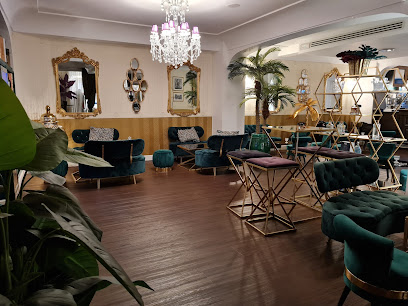
Complesso Sinatra Pompei (bar, caffetteria, lounge bar, vineria, karaoke)
Discover the lively atmosphere of Complesso Sinatra Pompei, a bar that offers great drinks, karaoke nights, and a vibrant ambiance in historic Pompei.

LUX BAR POMPEI
Experience local charm and authentic Italian flavors at Lux Bar Pompeii, a must-visit spot for tourists exploring the ancient ruins.

Travel experiences inspired by this city
Explore more travel diariesLocal Phrases
-
- HelloCiao
[chow] - GoodbyeArrivederci
[ar-ri-ve-der-chi] - YesSì
[see] - NoNo
[no] - Please/You're welcomePer favore/Prego
[per fa-vo-re/pre-go] - Thank youGrazie
[gra-tzi-e] - Excuse me/SorryMi scusi/Scusa
[mi skoo-zee/skoo-za] - How are you?Come stai?
[ko-me sty] - Fine. And you?Bene. E tu?
[be-ne/e too] - Do you speak English?Parli inglese?
[par-li een-gle-se] - I don't understandNon capisco
[non ca-pi-sko]
- HelloCiao
-
- I'd like to see the menu, pleaseVorrei vedere il menù, per favore
[vo-rrei ve-de-re eel me-noo, per fa-vo-re] - I don't eat meatNon mangio carne
[non man-jo car-ne] - Cheers!Salute!
[sa-lu-te] - I would like to pay, pleaseVorrei pagare, per favore
[vo-rrei pa-ga-re, per fa-vo-re]
- I'd like to see the menu, pleaseVorrei vedere il menù, per favore
-
- Help!Aiuto!
[ai-u-to] - Go away!Vai via!
[vai via] - Call the Police!Chiama la Polizia!
[kya-ma la po-lee-tzya] - Call a doctor!Chiama un medico!
[kya-ma oon me-di-ko] - I'm lostMi sono perso
[mi so-no per-so] - I'm illSto male
[sto ma-le]
- Help!Aiuto!
-
- I'd like to buy...Vorrei comprare...
[vo-rrei com-pra-re] - I'm just lookingSto solo guardando
[sto so-lo guar-dan-do] - How much is it?Quanto costa?
[kwon-to cos-ta] - That's too expensiveÈ troppo caro
[e tro-po ca-ro] - Can you lower the price?Può abbassare il prezzo?
[puo ab-ba-sa-re eel pre-tso]
- I'd like to buy...Vorrei comprare...
-
- What time is it?Che ore sono?
[ke o-re so-no] - It's one o'clockÈ l'una
[e loo-na] - Half past (10)Sono le dieci e mezza
[so-no le dyee-che e met-za] - MorningMattina
[mat-tee-na] - AfternoonPomeriggio
[po-me-ree-djo] - EveningSera
[se-ra] - YesterdayIeri
[ye-ri] - TodayOggi
[oj-ji] - TomorrowDomani
[do-ma-ni] - 1Uno
[oo-no] - 2Due
[dwe] - 3Tre
[tre] - 4Quattro
[kwa-ttro] - 5Cinque
[cheen-kwe] - 6Sei
[say] - 7Sette
[set-te] - 8Otto
[ot-to] - 9Nove
[no-ve] - 10Dieci
[dyee-che]
- What time is it?Che ore sono?
-
- Where's a/the...?Dov'è...?
[do-ve] - What's the address?Qual è l'indirizzo?
[kwal e lin-di-rit-tso] - Can you show me (on the map)?Puoi mostrarmi (sulla mappa)?
[pwow mo-sta-rmi/sul-la map-pa] - When's the next (bus)?Quando passa il prossimo (autobus)?
[kwan-do pas-sa eel pro-so-mo/au-to-boos] - A ticket (to ....)Un biglietto (per ....)
[oon beel-lyet-to/per]
- Where's a/the...?Dov'è...?
History of Pompeii
-
Pompeii was founded in the 7th or 6th century BC by the Oscans, an Italic people. It later came under Greek and Etruscan influence before becoming a Roman colony in 80 BC, known as Colonia Cornelia Veneria Pompeianorum.
-
During the Roman era, Pompeii flourished as a bustling city with a population of around 11,000 to 15,000 people. The city was known for its well-developed infrastructure, including an amphitheater, aqueducts, baths, and a sophisticated sewer system. Pompeii was also a significant center for agriculture, trade, and commerce.
-
On August 24, 79 AD, Mount Vesuvius erupted catastrophically, burying Pompeii under a thick layer of volcanic ash and pumice. The eruption lasted for two days, and the city was quickly enveloped, preserving buildings, artifacts, and even the bodies of its inhabitants in remarkable detail.
-
Pompeii remained buried until its rediscovery in 1748 by Spanish engineer Rocque Joaquin de Alcubierre. Excavations began, revealing a well-preserved snapshot of Roman life. The site has since become one of the most important archaeological sites in the world, offering invaluable insights into ancient Roman culture and daily life.
-
The Forum was the heart of public life in Pompeii, serving as a central marketplace and gathering spot for political, economic, and religious activities. Surrounded by important buildings such as the Basilica and the Temple of Jupiter, the Forum was a bustling hub of activity.
-
One of the largest and most luxurious residences in Pompeii, the House of the Faun is renowned for its intricate mosaics, including the famous 'Alexander Mosaic' depicting the Battle of Issus. This grand house exemplifies the wealth and sophistication of Pompeii's elite citizens.
-
Built around 70 BC, the amphitheater of Pompeii is one of the oldest surviving Roman amphitheaters. It could hold up to 20,000 spectators and was used for gladiatorial games and other public spectacles. Its well-preserved state provides a vivid picture of Roman entertainment.
-
Pompeii was home to several public bath complexes, including the Stabian Baths, the Forum Baths, and the Central Baths. These baths were not only places for bathing but also social centers where people gathered to relax and converse. The baths featured advanced heating systems and beautifully decorated rooms.
-
Located on the outskirts of Pompeii, the Villa of the Mysteries is famous for its well-preserved frescoes depicting the initiation rites of the Dionysian Mysteries. These vibrant and enigmatic paintings offer a glimpse into the religious practices and artistic achievements of the time.
-
The streets of Pompeii were meticulously planned and paved with large stone blocks. Many streets had stepping stones for pedestrians to cross when the roads were flooded. The city's layout, including its grid pattern and inscriptions on walls, helps us understand the organization and daily life of its inhabitants.
Pompeii Essentials
-
Pompeii is located in the Campania region of Italy, near the Bay of Naples. The nearest major airport is Naples International Airport (Aeroporto di Napoli-Capodichino), approximately 30 kilometers from Pompeii. From Naples, you can take a direct train from Napoli Centrale station to Pompei Scavi-Villa dei Misteri station, which takes about 30-40 minutes. Alternatively, you can drive or take a bus from Naples to Pompeii.
-
Pompeii can be easily navigated by foot, especially within the archaeological site. For travelling around the town or nearby areas, local buses and taxis are available. The Circumvesuviana train line connects Pompeii to Naples, Sorrento, and other nearby destinations, making it a convenient option for day trips. If you plan to explore the surrounding region, renting a car can provide added flexibility.
-
The official currency in Italy is the Euro (EUR). Credit and debit cards are widely accepted in hotels, restaurants, and shops, but it is advisable to carry some cash for smaller establishments and street vendors. ATMs are readily available throughout Pompeii. Be sure to notify your bank of your travel plans to avoid any issues with card transactions.
-
Pompeii is generally a safe destination for tourists. However, like any popular tourist spot, petty crimes such as pickpocketing can occur, especially in crowded areas. Avoid carrying large sums of cash and keep your belongings secure. Stay vigilant, particularly around the train station and popular tourist areas. Walking alone at night in poorly lit areas is not recommended.
-
In case of emergency, dial 112 for immediate assistance. This number connects you to emergency services including police, fire, and medical help. Pompeii has local police stations and medical facilities to assist tourists. It is advisable to have travel insurance that covers medical emergencies. For minor health issues, pharmacies are available in the town where you can purchase necessary medications.
-
Fashion: Do wear comfortable walking shoes and dress in layers, as the weather can change quickly. Avoid wearing high heels or flip-flops within the archaeological site. Religion: Do show respect when visiting religious sites; dress modestly and cover your shoulders and knees. Public Transport: Do validate your ticket before boarding trains and buses. Don't eat or drink on public transportation. Greetings: Do greet people with a friendly 'Buongiorno' (Good Morning) or 'Buonasera' (Good Evening). A handshake is common. Eating & Drinking: Do try local dishes such as pizza, pasta, and seafood. Don't rush your meals; dining is a leisurely affair in Italy.
-
To experience Pompeii like a local, visit the town's markets where you can buy fresh produce and local specialties. Engage with locals; they are often friendly and willing to share stories about their town. Don't miss the opportunity to explore less crowded areas of the archaeological site, such as the Villa of the Mysteries. For a unique experience, consider booking a guided tour to gain deeper insights into the history and culture of Pompeii.
-
Pompeii experiences a Mediterranean climate with hot, dry summers and mild, wet winters. The best time to visit is during the spring (April to June) and fall (September to October) when the weather is pleasant and the crowds are smaller. Summer can be very hot and crowded, while winter is less busy but can be rainy.
-
The official language of Pompeii is Italian. While many people in the tourism industry speak English, learning a few basic Italian phrases can enhance your experience and help you connect with locals. Common phrases include 'Grazie' (Thank you), 'Per favore' (Please), and 'Scusa' (Excuse me).
Trending Landmark in Pompeii
-
Pompeii Archaeological Park
-
Amphitheatre of Pompeii
-
Scavi di Pompei
-
Foro di Pompei
-
Pompeii (UNESCO)
-
Teatro Grande
-
Villa dei Misteri
-
Lupanare di Pompei
-
Scavi di Pompei (ingresso Piazza Immacolata)
-
House of the Faun
-
Garden of the Fugitives
-
Antiquarium di Pompei
-
Pompeii Ruins
-
House of the Vettii
-
Pompei Scavi Archeologici
Nearby Cities to Pompeii
-
Things To Do in Positano
-
Things To Do in Ravello
-
Things To Do in Herculaneum
-
Things To Do in Amalfi
-
Things To Do in Sorrento
-
Things To Do in Naples
-
Things To Do in Capri
-
Things To Do in Matera
-
Things To Do in Bari
-
Things To Do in Rome
-
Things To Do in St. Peter's Square
-
Things To Do in Apostolic Palace
-
Things To Do in Vatican Necropolis
-
Things To Do in St. Peter's Basilica
-
Things To Do in Sistine Chapel






























